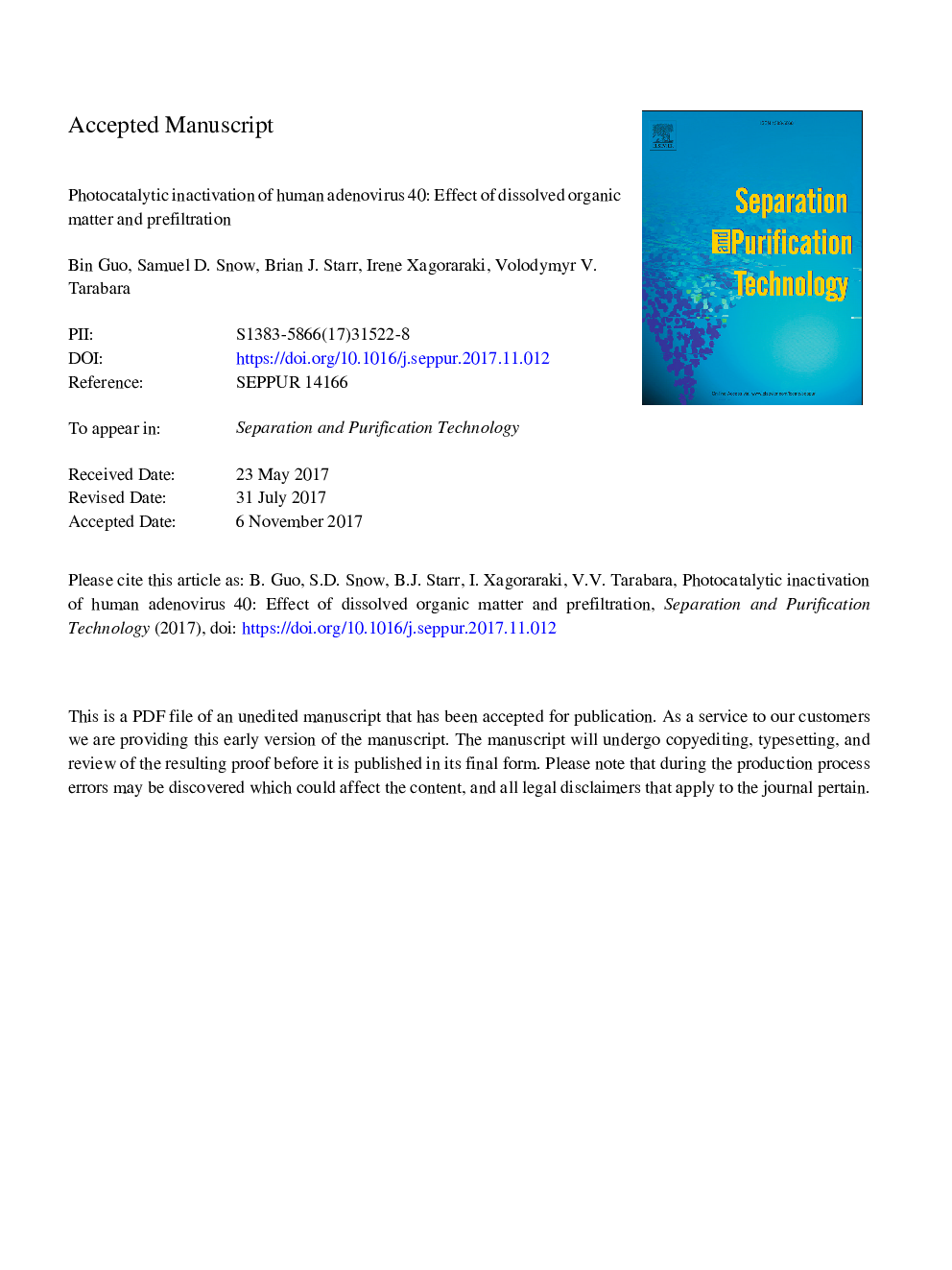| Article ID | Journal | Published Year | Pages | File Type |
|---|---|---|---|---|
| 7044126 | Separation and Purification Technology | 2018 | 56 Pages |
Abstract
Within the Adenoviridae family, human adenovirus 40 (HAdV40) is the most UV resistant serotype. This study explores photocatalytic inactivation of the pathogenic HAdV40 by UV light with TiO2 catalyst in the presence of dissolved organic matter. Scavenging of reactive oxygen species (ROS) by dissolved organics is significant: 9.6â¯mg(DOC)/L decreases [OH] by the factor of â¼17.4 with respect to that in deionized water. Regardless of the pre-filter choice (dporeâ¯=â¯0.03â¯Î¼m, 0.45â¯Î¼m, or 0.8â¯Î¼m), the removal of the total HAdV40 by photocatalytic UV depends linearly on UV254 fluence, Φ254, indicating that water quality impacts the DNA damage via fluence attenuation only. In contrast, the removal of infectious HAdV40 depends on the nature of dissolved constituents in the sample; at low Φ254, for the same value of fluence photocatalytic UV disinfection is more effective when using the smallest pore size (0.03â¯Î¼m) pre-filter. The differences in concentration, molecular weight, and type of organic molecules that pass through different prefilters should translate into variations in the extent of quenching. Apparently, filtration through a 0.03â¯Î¼m membrane produces sufficiently pure permeate for the adenovirus to become an ROS's target competitive with remaining organic scavengers. Combining a photocatalyst-coated microfiltration membrane (dporeâ¯=â¯0.8â¯Î¼m) with UV light into a photocatalytic membrane reactor removes â¼3.0 log of infectious HAdV40 in the high throughput continuous flow process with the initial specific permeate flux of 3322â¯Â±â¯266 (Lâ¯mâ2â¯hâ1â¯barâ1). The results point to the potential feasibility of photocatalytic disinfection as a tertiary treatment applied to a relatively high quality effluent typical for membrane filtration plants.
Keywords
Related Topics
Physical Sciences and Engineering
Chemical Engineering
Filtration and Separation
Authors
Bin Guo, Samuel D. Snow, Brian J. Starr, Irene Xagoraraki, Volodymyr V. Tarabara,
